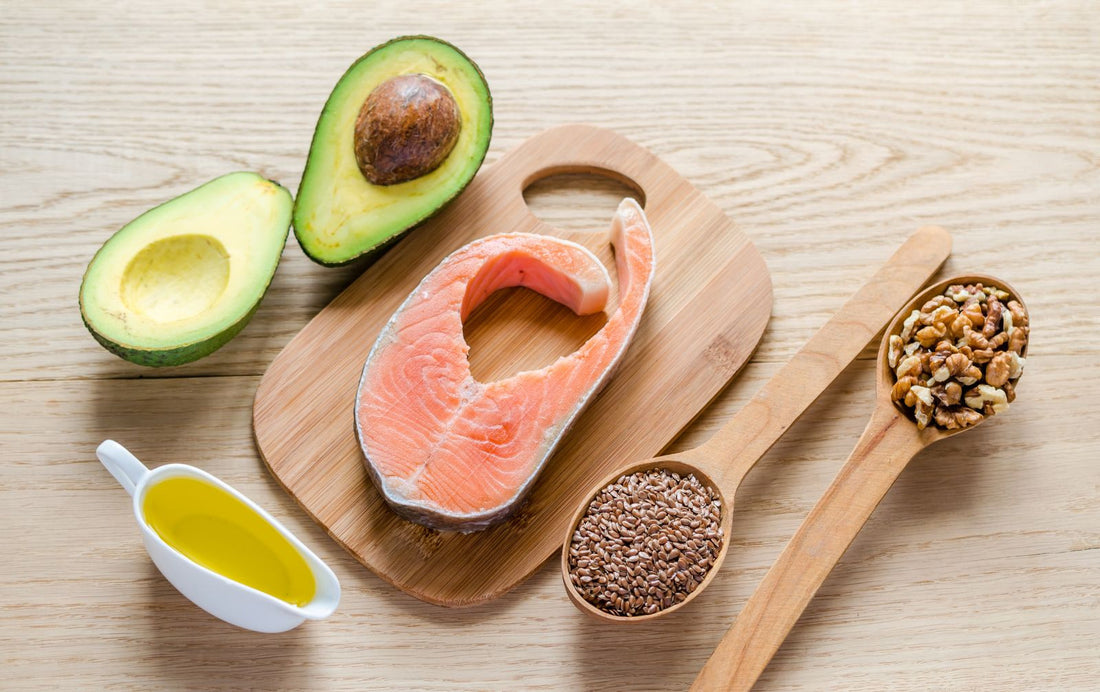It wasn't long ago mentions of a ketogenic diet or ketosis or ketones were met with puzzled stares. While the diet has been used for some time in health research for patients with Alzheimers and mental illness, it's now recognised by the fitness industry as a sound method to restrict glucose levels and potentially burn fat quickly.
During the Hustler Fitness Lean Muscle Transformation program, the ketogenic diet is recommended in certain weeks because of its vast body composition and digestive health benefits. Combine this with the training prescribed in the Transformation package and results can be seen in a short period of time as they did in my own transformation.
Ketogenic Diet Benefits
So why consider a ketogenic diet?
The benefits include:
- Relief from hypoglycemia, food fixations and sugar cravings
- Improves mental clarity
- Lack of hunger
- Helps fight cancer
- Lower blood pressure
- Increased energy
- Decrease in stiffness and joint pain
- Improve sleep apnea
- Weight loss
- Heartburn relief
- Drop in cholesterol
- Improved digestion while feeling "lighter" and less bloated
- Increased HDL cholestrol
- Decreased triglycerides
- Decreased fasting blood sugar and fasting insulin levels
- Mood stabilisation
While the benefits are immense, ketosis remains a mystery to many new trainees and bodybuilders. This post aims to answer common questions about ketosis and assist you in deciding if a ketogenic diet is right for you.
Let's get started.
So what exactly is a ketogenic diet?
The body typically gets its fuel from dietary carbohydrates, which includes foods like rice, bread, pasta, and other grains, along with fruit, sugars, and vegetables.
When carbohydrates, specifically starches and sugars enter the body they are broken down into glucose, and used by the body for energy. The hormone insulin then steps in to remove glucose from the bloodstream and the body either uses it for energy or stores any that is unused.
Any glucose that is not immediately used as fuel will be sent to the liver and muscles to be stored as glycogen as a fuel reserve, and any unused glycogen in the muscles, such as through exercise or energy expenditure turns to stored body fat.
For people with a carb sensitivity or those with insulin resistance it’s a grim outlook that can lead to obesity and type 2 diabetes…
High carb diet = high glucose in the blood = high insulin = high amounts of body fat
An alternative source of fuel for the body is its own body fat, this process is triggered when the intake of carbs is limited, and their sources controlled, the body enters a state called lipolysis, the most efficient biochemical pathway to weight loss and a scientifically proven alternative to the body using or needing glucose for energy.
Lipolysis & Ketosis
Lipolysis occurs as the body begins to burn the body’s own fat stores for energy instead of dietary carbohydrates and the by-products of this fat burning process are ketones and so ketosis is the secondary process of lipolysis.
When you eliminate carbs, the body is forced to use its fat stores instead, which literally turns into a fat burning machine. Ketones are the byproducts of ketosis and provide fuel for the body.
The only true exception to the body not needing glucose for fuel is ketones. Ketosis not only provides adequate energy for the cells within the body, it also fuels the brain and other organs just as glucose from carbs does BUT, unlike what may occur during the use of glucose, ketosis does not store fat, and actually allows the body to burn stored fat for fuel.
This is the reason that low carb diets are so popular and have allowed thousands of people to lose weight and keep it off.

After 3-4 days following this diet, the body produces ketones and enters into a state of ketosis where it uses fat for fuel instead of carbohydrates.
- For more on the types of foods you need to eat while on ketosis, see the Ketogenic Diet Food Pyramid here.
Ketosis: Learning to Love Fat
All our lives we've been taught to avoid fat because it will make you fat.
Ketosis requires a complete change of thinking.
75% of your diet consists of healthy fats. Almonds, cashews, nut butter, coconut oil, olive oil, butter. This becomes your source of fuel.
Ketogenic Diet Explained
In the footage below, Steve Hertzler, PhD, RD and Jason Wittrock, a trainer and ketogenic diet adherent, present a very insightful conversation into ketosis.
Of particular interest is the conversation concerning ketosis, supplements, muscle building while on the ketogenic diet and the aesthetic changes that follow keto.
If you are serious about the ketogenic diet, set aside 60 minutes to watch the introduction to ketosis below:
Table of Contents
Who Are Dr. Steve Hertzler And Jason Wittrock, And What Are We Going To Discuss? - 00:10
What Is The Ketogenic Diet? - 1:09
- The history in a clinical setting
- The typical ketogenic macros
- What makes it so popular for fitness?
How Does The Ketogenic Diet Work? - 2:20
- Metabolizing carbs vs. fat and ketones
- Ketogenic versus high protein, low-carb diets
What Are Ketones, And Why Are They Important? - 3:10
- The three types of ketone bodies
- How your body can use ketones
- Ketones, glucose, and insulin
- High carb diets, insulin resistance, and diabetes
Who Uses The Ketogenic Diet Aside From Athletes? - 6:40
- Cancer cells and glucose
- Parkinsons and alzheimers: two new areas of research
- Metabolic syndrome and mental health medication
Where Do I Start, And What Are The Most Common Beginner Errors? - 9:40
- The most important thing to know
- Fat phobia: the hardest part at first
- The staples of Jason's ketogenic diet
- Carbs vs net carbs
- "Avoid carbs" versus "get enough fat"
Is Tracking Macros Necessary? - 14:20
- When tracking can help you troubleshoot problems
- When you can stop tracking
What Can I Expect For The First Few Days? - 15:50
- "Ketogenic" versus "keto-adapted"
- The first two weeks are "hell week"
- Fluids and electrolytes
- The importance of sodium, potassium, magnesium
Is Testing Necessary, And How Should I Do It? - 21:56
- Pee sticks, blood, and breath testing
- Which one is the most accurate?
How Should I Alter My Training During Keto-Induction? - 24:30
- The effects of adaptation on strength levels
- HIIT to deplete glycogen and hasten keto-adaptation
- Supplements to include, others to avoid
- How to avoid muscle loss when going ketogenic
How Is It Different When You're Finally Keto-Adapted? - 28:50
- Energy levels and ketosis
- The effects on mental clarity, appetite
- Endurance and ketogenic dieting
- Periodized ketosis for athletes
Can I Add Muscle On The Ketogenic Diet? - 32:20
- New research into adding lean mass while keto
- Why keto isn't the optimal diet for adding big-time muscle quickly
- The importance of blood value testing
How Does Keto Work With Everyday Life? - 36:00
- Jason Wittrock's introduction to ketogenic dieting
- Keto cycling for social outings
- Keto cycling when fat-loss is the goal
- Ketosis and fitness modeling
- The physique effects of ketogenic dieting
What's The Right And Wrong Way To Cycle Ketogenic Dieting? - 43:20
- The importance of getting keto-adapted first
- Why monitoring yourself is key
- A diet versus a lifestyle.
- Why this diet, like all others, comes down to adherence
- The beauty of keto-coffee
What Is The Future Of Ketogenic Research? - 48:10
- Metabolic syndrome and ketosis
- Keto for helping athletes make weight and keep muscle
- Ketogenic dieting, exercise, and weight loss
What's The Number One Mistake You See, And How Would You Correct It? - 54:45
- Fear of losing gains
- Seriously, get your electrolytes
- Educate, plan, and monitor




